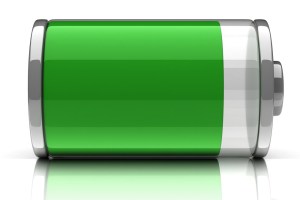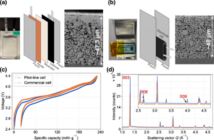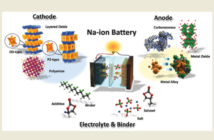A new study shows that rapid-charging a battery and using it to provide high-power, rapidly draining power may not be as damaging as researchers had originally thought, and the benefits of slow draining and recharging may have been overestimated.
These results challenge the prevailing view that “supercharging” batteries is always harder on battery electrodes than charging them at a slower rate, according to researchers from Stanford University and the Stanford Institute for Materials & Energy Sciences (SIMES) at the Department of Energy’s SLAC National Accelerator Laboratory.
The study goes on to suggest that scientists may be able to modify electrodes or change the way batteries are charged to promote more uniformed charging and discharging to extend battery life.
“The fine detail of what happens in an electrode during charging and discharging is just one of many factors that determine battery life, but it’s one that, until this study, was not adequately understood,” said William Chueh of SIMES, an assistant professor at Stanford’s Department of Materials Science and Engineering, who is also the author of the study. “We have found a new way to think about battery degradation.”
The results, he went on to say, can be directly applied to many oxide and graphite electrodes used in today’s commercial lithium ion batteries and in about half of those under development.
Chueh’s team described the study in the September 14, 2014 publication of Natural Materials. The team included collaborators from Massachusetts Institute of Technology, Sandia National Laboratories, Samsung Advanced Institute of Technology America and Lawrence Berkeley National Laboratory.
The swelling and shrinking of the negative and positive electrodes as they absorb and release ions from the electrolyte during charging and discharging, is one important source of battery wear and tear.
Scientists looked at a positive electrode made of billions of nanoparticles of lithium iron phosphate, for this study. If most or all of these particles actively participate in charging and discharging, they’ll absorb and release ions more gently and uniformly. But if only a small percentage of particles collect all the ions, they’re more likely to crack and get ruined, degrading the battery’s performance.
Previous studies have produced conflicting views of how the nanoparticles behaved. To probe further, researchers made small coin cell batteries, charged them with different levels of current for various periods of time, quickly took them apart and rinsed the components to stop the charge/discharge process.Then they cut the electrode into extremely thin slices and took them to Berkeley Lab for examination with intense X-rays from the Advanced Light Source synchrotron, a DOE Office of Science User Facility.
“We were able to look at thousands of electrode nanoparticles at a time and get snapshots of them at different stages during charging and discharging,” said Stanford graduate student Yiyang Li, lead author of the report. “This study is the first to do that comprehensively, under many charging and discharging conditions.”
Related Articles:
Some Interesting Battery Charging Techniques
Effects Of Quick And Conventional Electric Car Charging On Battery Performance




